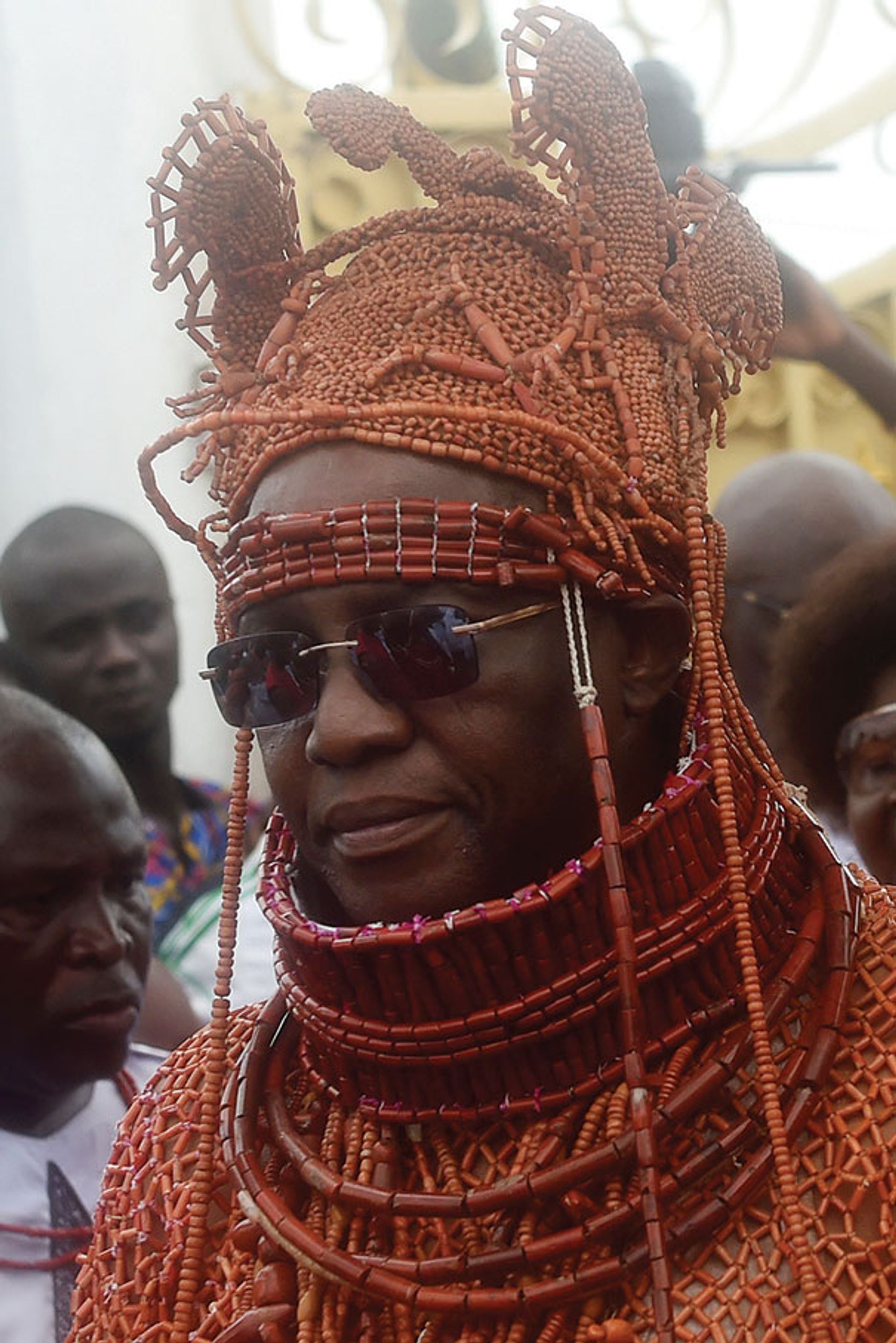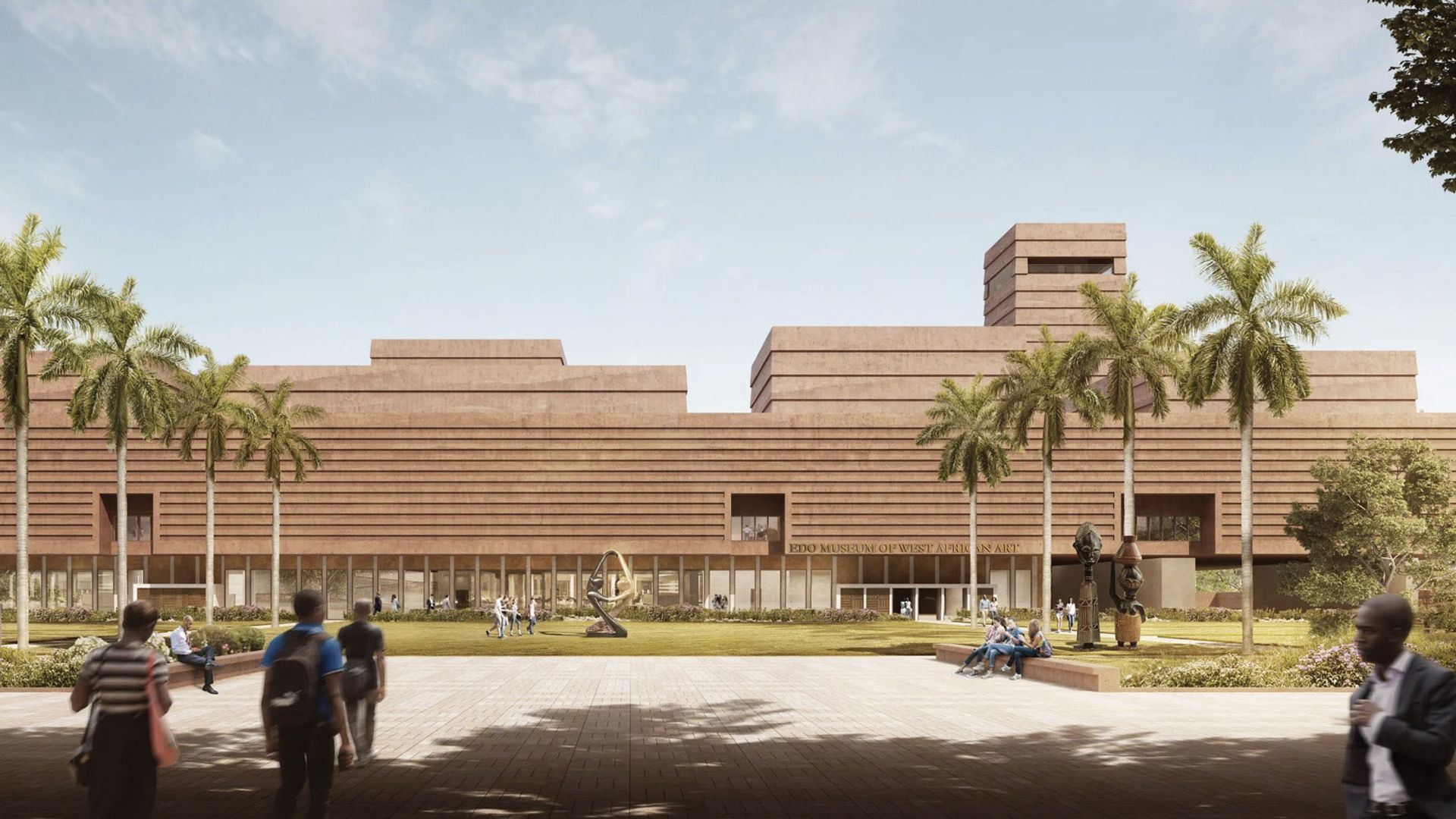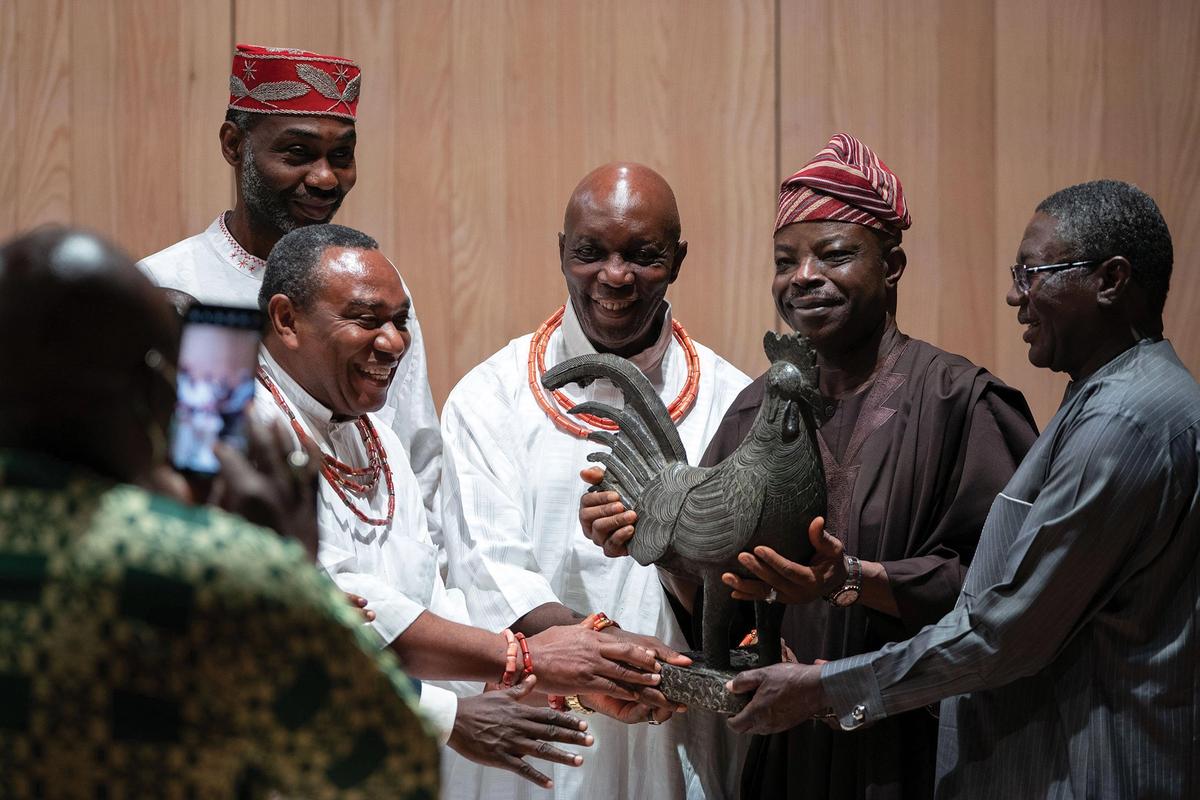Nigeria’s National Commission for Museums and Monuments (NCMM) has stepped in to take possession of returning Benin bronzes that were looted from the West African kingdom after the current Oba (king) of Benin opposed the new organisation tasked with building a museum for the contested artefacts.
Abba Isa Tijani, the NCMM’s director, says his government body is now “coordinating the repatriation” following the objections of Benin’s traditional ruler, Oba Ewuare II. “We will partner with the Oba,” Tijani says. “These objects were taken from the royal palace. We see the traditional leaders as custodians of our heritage. We will work towards what is best for Nigeria and what is best for the objects.”
A growing number of Western museums have pledged to return artefacts in their collections that were plundered by British troops in an 1897 raid on the royal palace in Benin. (The catch-all description “Benin bronzes” encompasses items made of ivory and brass as well as bronze.) Many of them made contact with Nigeria’s new Legacy Restoration Trust (LRT), an independent non-profit created to unify the three institutions that could have a legitimate claim to the bronzes: the Royal Court of Benin under the Oba, the federal government and the modern-day Nigerian state of Edo, which incorporates the old kingdom of Benin.

Oba Ewuare II, the 40th monarch of the ancient kingdom of Benin, does not support the building of the proposed Edo Museum of West African Art Pius Utomi Ekpei/AFP via Getty Images
But in a move that a BBC report said “could jeopardise plans for the return of some of Africa’s most famous artefacts”, Oba Ewuare II last year denied the royal court’s participation in the trust and said he did not support the initiative. He reiterated his opposition in a virtual address to the Benin Dialogue Group of Nigerian and European museum representatives during a meeting last October at the British Museum in London. “We were never party to this concept of LRT, or any other privately constituted group formed in Nigeria to negotiate the return of our artefacts,” he said, according to a transcript seen by The Art Newspaper. He added that it is “baffling to discover that such a group was incorporated in Nigeria without the knowledge or representation of the Royal Court of Benin”.
Two new Benin museums
The Oba’s comments surprised some observers, who pointed out that his son, Crown Prince Ezelekhae Ewuare, sits on the Legacy Restoration Trust’s board of trustees. The trust’s main purpose is to raise funds for the construction in Benin City of the Edo Museum of West African Art (EMOWAA), designed by the architect David Adjaye, which is expected to house the world’s “most comprehensive” display of Benin bronzes.

A rendering of the proposed Edo Museum of West African Art in Benin City, designed by architect David Adjaye Adjaye Associates
But the Oba said the royal court is planning its own “quite different” museum, the Benin Royal Museum. “Any museum in Nigeria to hold Benin bronzes should be under the control of the National Commission for Museums and Monuments and the Royal Court of Benin,” he told the Benin Dialogue Group. “We hereby ask that all attention and assistance towards the establishment of a museum in Benin, for the purpose of housing artefacts that were looted from the palace and the kingdom of Benin, be properly directed to the proposed Benin Royal Museum.”
Bringing the bronzes home
Meanwhile, Tijani of the NCMM has been flying around the world to pick up looted Benin bronzes. In October, he received sculptures of a cockerel and of the head of an Oba from the universities of Cambridge and Aberdeen respectively. In November, he was in New York to take possession of two brass plaques from the Metropolitan Museum of Art. Germany and Nigeria have also signed a memorandum of understanding in preparation for the restitution later this year of more than 1,100 Benin bronzes in German museums.
The Nigerian government supports plans for both the Edo Museum and the Benin Royal Museum, according to Tijani. His main priority will be making sure that any facilities are adequate for the conservation of the returning artefacts.
“We will support the construction of any new museum,” Tijani says. “It is needed. The facilities we have now will not be enough for the artefacts that are coming back. The commission supports palace museums—we have a few of them across the country.”
Phillip Ihenacho, the executive director of the Legacy Restoration Trust, fielded requests from museums around the world relating to the restitution of Benin artefacts in 2021. But he stresses that “our core function is to raise money for the EMOWAA”.
The planned museum will serve a different purpose from the Benin Royal Museum, Ihenacho says, in that it aims to “connect the ancient with the modern”. He envisages the new facility as “an integrated part of an entire cultural district or creative hub, connecting with modern creatives”.
The trust aims to begin construction of a temporary museum designed by Adjaye, which it refers to as a pavilion, in March. This will provide an exhibition space for the Benin bronzes before the Edo Museum is constructed.
But even before the pavilion is ready, Tijani would like to display the returning artefacts if a suitable space is available. He describes a homecoming exhibition that will examine the history of the repatriation movement and “will involve the partners who have returned the objects to us, as the history of those institutions is also embedded in our history”.
An exhibition would show the Nigerian people that restitution is for real, he says. “They will be able to see that it’s not just hearsay, but it’s really happening.”


